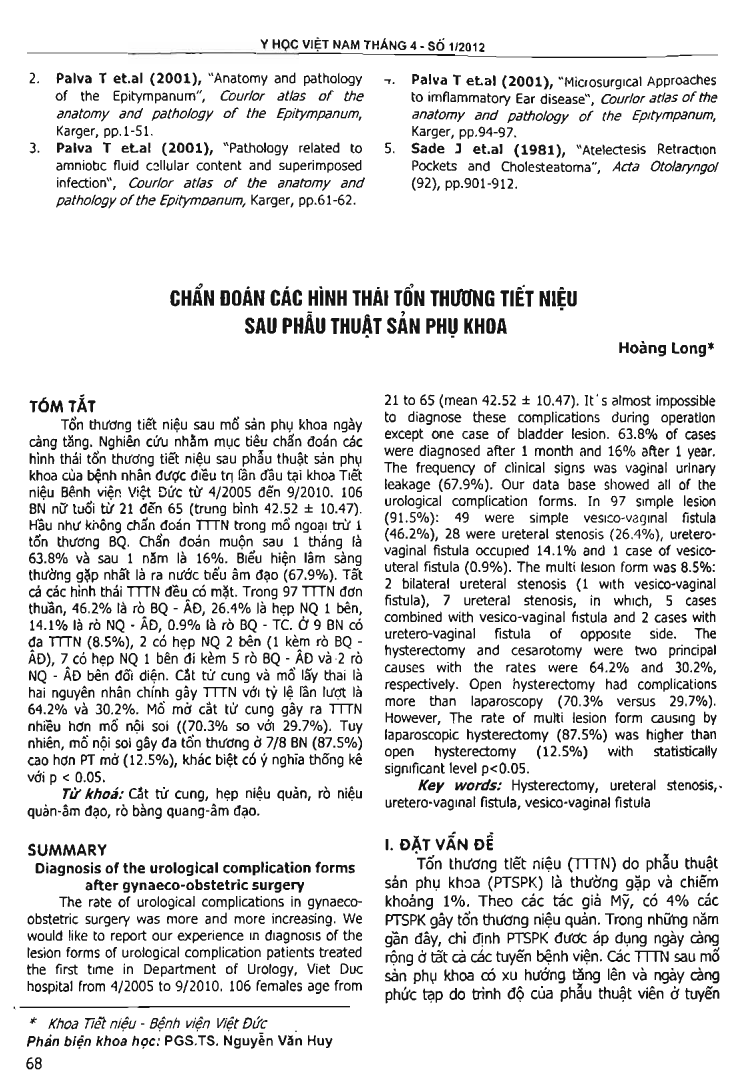
The rate of urological complications in gynaecoobstetric surgery was more and more increasing. The author reported experience in diagnosis of the lesion forms of urological complication patients treated the first time in Department of Urology, Viet Duc hospital from 4/20.05 to 9/2010. 106 females age from 21 to 65 (mean 42.52 + or - 10.47). It's almost impossible to diagnose these complications during operation except one case of bladder lesion. 63.8 percent of cases were diagnosed after 1 month and 16 percent after 1 year. The frequency of clinical signs was vaginal urinary leakage (67.9 percent). The data base showed all of the urological complication forms. In 97 simple lesion (91.5 percent): 49 were simple vesico-vaginal fistula (46.2 percent), 28 were ureteral stenosis (26.4 percent), ureterovaginal fistula occupied 14.1 percent and 1 case of vesicouteral fistula (0.9 percent). The multi lesion form was 8.5 percent: 2 bilateral ureteral stenosis (1 with vesico-vaginal fistula), 7 ureteral stenosis, in which, 5 cases combined with vesico-vaginal fistula and 2 cases with uretero-vaginal fistula of opposite side. The hysterectomy and cesarotomy were two principal causes with the rates were 64.2 percent and 30.2 percent, respectively. Open hysterectomy had complications more than laparoscopy (70.3 percent versus 29.7 percent). However, The rate of multi lesion form causing by laparoscopic hysterectomy (87.5 percent) was .higher than open hysterectomy (12.5 percent) with statistically significant level p 0.05.
- Đăng nhập để gửi ý kiến
